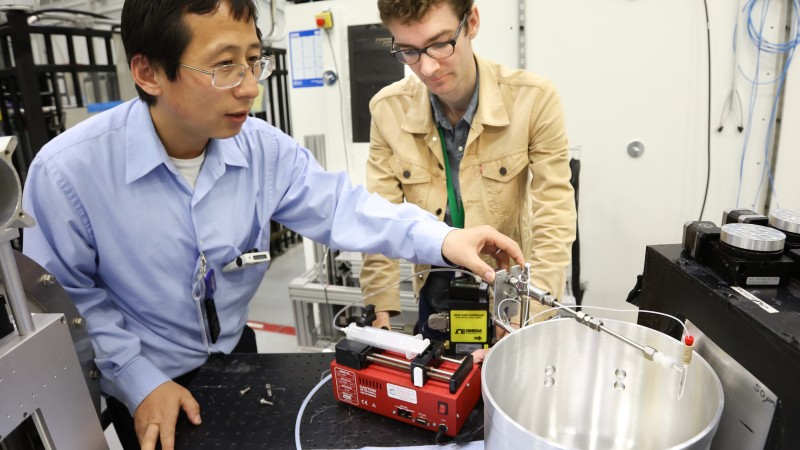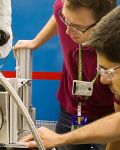One of the grand challenges in aerospace engineering is the development of hypersonic vehicles capable of traveling at or above Mach 5—about 4,000 miles per hour or faster. However, liquid fuel combustion at those speeds and atmospheric conditions is not well understood.
Searching for solutions to supersonic fluid flow behavior, researchers from the University of Tennessee–Knoxville, and the US Air Force are using neutron radiography at the Department of Energy’s (DOE’s) Oak Ridge National Laboratory (ORNL). The team says a better understanding of spray dynamics will lead to improved fuel injector designs for the aeronautic and automotive industries as well as other spray-related applications used in agriculture, pharmaceuticals and manufacturing.
“In hypersonic systems, when you’re flying at, say, Mach 5, you’re basically flying like 1,000 meters per second, and the fuel has to be sprayed into a supersonic flow, which then has less than a millisecond to burn,” said UT Associate Professor Zhili Zhang. “So we need a nozzle efficient enough to do this; but, unfortunately, there’s no standard nozzle that exists.”
Using the IMAGING beamline CG-1D at ORNL’s High Flux Isotope Reactor, the researchers designed an experiment using different nozzle configurations to study the interior and exterior flow patterns before and just after the spray is dispersed into the combustion chamber.
Neutrons are ideal for this kind of research because they can see through almost any material in a nondestructive fashion and are sensitive to light elements such as hydrogen and various hydrocarbons used in jet fuel. More specifically, neutron radiography allowed the team to look through the metal nozzles and observe the fluid densities and flow pattern behaviors to determine how liquid fuel might flow more effectively with improved designs.
“We’re interested in developing an instrument capability that will enable people to get data on those behaviors. From there we’ll be able to know things about atomization and temperature and other effects that deal with combustion efficiency,” said UT graduate research assistant Cary Smith. “The more we can scientifically understand those things, the better we’ll be able to design efficient nozzles for better combustion.”
HFIR is a DOE Office of Science User Facility. UT-Battelle manages ORNL for DOE’s Office of Science. The Office of Science is the single largest supporter of basic research in the physical sciences in the United States and is working to address some of the most pressing challenges of our time. For more information, please visit http://science.energy.gov/.—by Jeremy Rumsey






